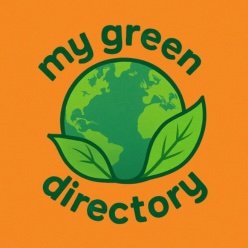Learn how to Use Green Infrastructure to Support Wildlife: A Practical Guide for Biodiversity and Urban Nature. Discover how green infrastructure—like green roofs, rain gardens, and wildlife corridors—can restore habitats, boost biodiversity, and reconnect ecosystems in urban and rural areas. Learn actionable strategies to promote wildlife conservation and enhance community wellbeing.
Green infrastructure is a game-changer for wildlife conservation, especially in increasingly urbanized environments. By weaving nature-based solutions into city planning and rural development, we can restore natural habitats, promote biodiversity, and reconnect fragmented ecosystems. This guide shows how to implement green infrastructure to benefit both wildlife and your community.
🌱 What Is Green Infrastructure?
Green infrastructure refers to a network of natural and semi-natural spaces—like parks, green roofs, wetlands, rain gardens, bioswales, and wildlife corridors—that mimic natural systems. These spaces provide vital ecological services and offer essential habitats for wildlife, all while delivering social and economic benefits.
🐦 Why Green Infrastructure Matters for Wildlife
✅ Habitat Creation
Green roofs, vertical gardens, and native plant landscapes provide food, shelter, and nesting areas for birds, pollinators, and small mammals.
✅ Ecological Connectivity
Wildlife corridors and greenways connect fragmented habitats, enabling safe movement and supporting genetic diversity.
✅ Biodiversity Boost
Native plantings attract and sustain local species, encouraging ecological balance and pollinator health.
✅ Climate Adaptation
Green infrastructure mitigates urban heat islands, controls flooding, and filters stormwater—benefiting both people and animals.
✅ Community Wellbeing
Greener cities mean healthier people, improved mental health, recreational opportunities, and increased property values.
🚀 How to Support Wildlife Using Green Infrastructure
1️⃣ Create Wildlife Corridors & Greenways
Design continuous green pathways that link natural areas and allow animals to migrate, find food, and mate safely.
🪻 Use native vegetation to attract local wildlife and pollinators.
2️⃣ Incorporate Green Roofs & Living Walls
Transform rooftops and building facades into thriving habitats.
🌿 Choose native, drought-tolerant plants to minimize maintenance and maximize biodiversity.
3️⃣ Build Rain Gardens & Bioswales
Capture runoff, reduce pollution, and provide amphibians and insects with wetland-like habitats.
💧 Use water-loving native plants to attract frogs, dragonflies, and beneficial insects.
4️⃣ Design Wildlife-Friendly Urban Areas
Prioritize green space in urban planning to reduce habitat loss.
🚗 Install wildlife crossings like tunnels or bridges to protect animals from traffic.
5️⃣ Engage Your Community
Launch community gardens, native plant programs, and education projects that support urban biodiversity.
🤝 Partner with local conservation groups or municipalities to fund and scale green initiatives.
🌍 Real-World Examples: Green Infrastructure That Helps Wildlife
| Green Feature | Wildlife Benefits | Species Supported |
|---|---|---|
| Green Roofs & Walls | Shelter, food, and nesting areas | Birds, bees, butterflies |
| Rain Gardens & Bioswales | Wetland-like habitat, stormwater filtering | Frogs, dragonflies, pollinators |
| Wildlife Corridors | Safe movement and genetic diversity | Mammals, birds, reptiles |
| Community Gardens | Foraging and nesting habitat + public awareness | Small mammals, insects, birds |
🌟 Final Thoughts
Investing in green infrastructure isn’t just good for wildlife—it makes communities healthier, more resilient, and more livable. Whether you’re designing a rooftop garden, building a rain garden, or advocating for a citywide green corridor, your efforts make a meaningful impact on both nature and society.
Disclaimer:
The content provided on MyGreenDirectory.com is for general informational purposes only and does not constitute professional, legal, financial, environmental, or health advice. While we aim to highlight sustainable businesses, products, and services, we encourage all users to independently verify claims, certifications, and practices before making any decisions or purchases.
Some of the links on this site may be affiliate links. This means we may earn a small commission if you click through and make a purchase, at no additional cost to you. These commissions help support the maintenance of the directory, but they do not influence our editorial content or the inclusion of listings.

Comments